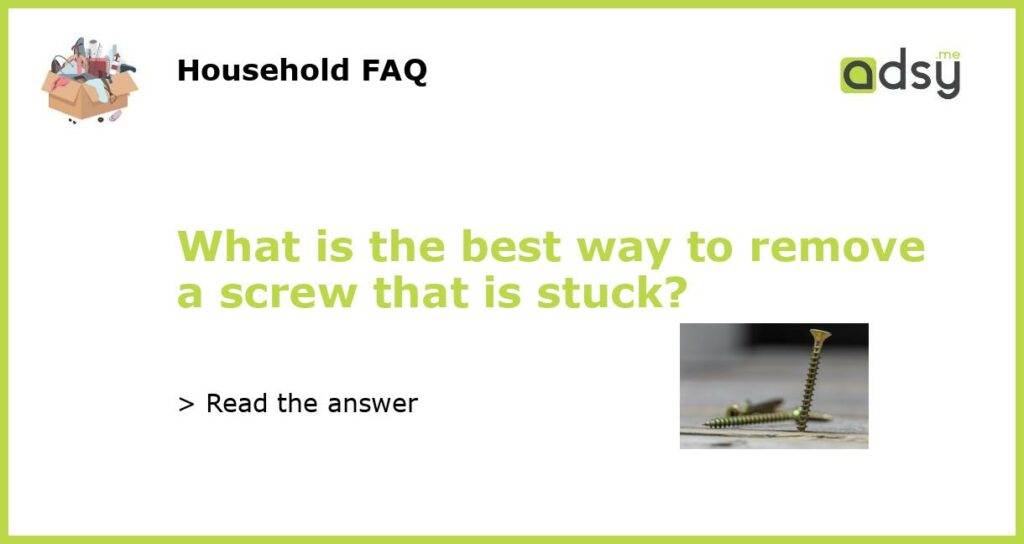Using Lubrication
One of the best and easiest ways to remove a stuck screw is by using lubrication. Applying a lubricant, such as WD-40, to the screw can help to loosen it and make it easier to remove. Start by spraying the lubricant directly onto the screw and give it some time to penetrate and work its way into the threads. After a few minutes, try using a screwdriver to turn the screw. The lubrication should have loosened the screw, allowing you to remove it easily.
Applying Heat
If lubrication doesn’t do the trick, another effective method is applying heat to the stuck screw. Heat can expand the metal surrounding the screw, helping to break the bond created by rust or other factors that may be causing the screw to stick. You can use a heat source such as a hairdryer, heat gun, or even a soldering iron. Apply the heat directly to the screw for about 30 seconds to a minute, making sure to avoid overheating or damaging surrounding materials. Once the screw has been heated, try turning it with a screwdriver. The expansion caused by the heat should make it easier to remove.
Using a Screw Extractor
When a screw is extremely stuck, a screw extractor can be a useful tool. A screw extractor is a special type of drill bit that is designed to remove stripped or broken screws. To use a screw extractor, you will need a power drill. Start by drilling a small hole into the center of the stuck screw using a regular drill bit. Then, insert the screw extractor into the hole and use the drill to turn it counterclockwise. The extractor will grip the stuck screw, allowing you to remove it. It’s important to use the correct size extractor for the screw you are working with to avoid damaging the surrounding materials.
Tapping and Hammering
If the screw is stuck due to corrosion or being overtightened, tapping and hammering may help to loosen it. To do this, place a screwdriver into the screwhead and lightly tap the end of the screwdriver with a hammer. The force of the tapping can help to break the bond and loosen the screw. Be careful not to apply too much force, as this can damage the surrounding materials or strip the screw. If the screw still won’t budge, you can try using pliers or a wrench to grip the screw and apply additional torque while tapping. The combined tapping and twisting motion can often free a stuck screw.
Drilling Out the Screw
If all else fails, drilling out the stuck screw may be the only option. This method should be used as a last resort, as it can potentially damage the surrounding materials. Start by selecting a drill bit that is slightly smaller than the diameter of the screw. Then, carefully drill into the center of the screw. As you drill, the screw should begin to loosen. Once the head of the screw has been removed, you should be able to easily pull out the remaining portion. Remember to proceed with caution and use protective eyewear when drilling, as metal shavings can fly off and cause injury.






